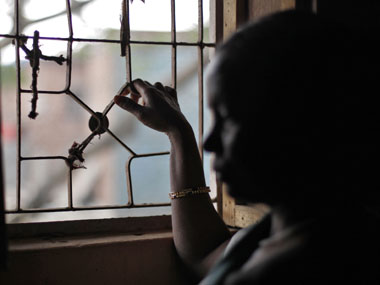Ranchi: Twelve-year-old Mani Oaron (name changed) went missing from her small village in Arki block of Khunti district around a year ago but her family never approached the police to lodge a complaint. On being asked why, her mother said, “We do not have a photograph of her. Also, there is no identity proof. We were told that if we go to police they would ask for these documents.” Rani Xalxo (name changed) of Ranhi’s Lapung block said her daughter went missing around three years ago. “I do not have a photograph. Where do I get one from? Nobody in my village has a camera phone. One of my relatives has a phone which we use to make calls but it does not take photos,” she said.
A similar story is told in the interiors of Jharkhand: If a child goes missing, finding him or her becomes a big problem — for both the families as well as the police — due to lack of photographs or proper documents. Arti Kujur, chairperson, Jharkhand State Commission for Protection of Child Rights (JSCPCR) said, “I keep visiting villages and come across cases in which children have been missing for five to eight years but the parents never approached the police due to lack of photographs or identity proof. As a result, a number of such incidents go unreported.”
Forty-five percent of children reported missing in Jharkhand are untraceable. Jharkhand Crime Investigation Department data shows 2,489 children were reported missing between 2013 and May 2017: 1,114 children haven’t been found. Jharkhand is a major human trafficking hub, especially for labour and domestic help. However, Jharkhand has Anti-Human Trafficking Units (AHTU) in only eight out of 24 districts (Ranchi, Khunti, Gumla, Lohardaga, Simdega, Chaibasa, Palamu and Dumka).
Aradhana Singh, retired police officer and former SHO at Khunti AHTU, rescued over 400 trafficked children during her tenure. She confirms that lack of photographs and documents such as Aadhaar card or ration cards makes it difficult to locate missing children. “Of all such cases I dealt with, parents or kin did not have photographs or identity cards in at least 50 percent cases,” she said. She added, “If the child was studying when they went missing, we were able to access the photo and documents from school but in most of the cases the children were never enrolled in schools,” she said.
Repatriating rescued children another problem
Reema Kumari (name changed), 17, recently returned to Khunti village after spending over two years at a shelter home in Delhi. She was rescued from the clutches of a placement agent around two years ago but could not be sent back because she did not possess any identity proof and due to the lack of information regarding her village. She was able to return only after she was able to inform the authorities she is from Khunti and after much efforts of the Khunti Child Welfare Committee (CWC) to locate her family.
Manoj Kumar Rai, former chairperson, Khunti CWC, said, “Tracing the homes of rescued children who do not have an identity proof is a big problem." Rai, whose term ended on 5 June added, “Earlier, if the rescued children said they were from Khunti they would be sent directly without verification about their homes. Later, we’d find that some children were not from our district and thus had to be kept in shelter homes.” Rai said that in order to avoid this, the CWC started to tell the respective states in which the child was rescued to keep them there until the child’s home address was found.
“Finding their homes is very challenging as most children do not have Aadhaar cards. In such cases, we rely on school records. However, in most cases that does not help and we are left with no option but to let children stay in shelter homes,” he said. Lack of documents and photographs is a major concern not just in searching for the children but also reuniting children who are rescued from traffickers. “We rescue hundreds of children from the clutches of traffickers every month but in most cases, the survivors do not have identity proof. Instead, the placement agents make fake ID cards for these girls to present them as adults. As a result, these survivors are forced to stay at shelter homes instead of being repatriated,” said Rishi Kant of Shakti Vahini, a social organisation working against human trafficking.
Aradhana Singh said that of 400 children she rescued, at least 40 percent did not possess any kind of identity proof and their names weren’t listed on any type of government documents. “I’ve come across cases in which rescued girls have been kept in shelter homes in Delhi and Haryana for as long as six years because their families were not traceable,” Singh said. She added, “I took help from missionaries and local NGOs working in interiors to locate the families of such survivors. They knew the families in every village they worked in and could tell me if any children were missing.”
Bal Krishna Goel, member, Haryana State Commission for Protection of Child Rights, said he has been getting many such cases of rescued children, and finding their villages becomes really difficult. “Traffickers make fake Aadhaar cards for girls, so I’d request employers to check the Aadhaar number of the girls on UIDAI website,” he said. Goel added, “In most cases, we are solely dependent on the word of the children who are unable to provide the name of their village or even district so it gets really difficult to trace their families.” Aradhana Singh points out a major reason behind the lack of documents and ID for children in interiors is that most officials making Aadhaar cards aren’t able to reach those areas because of threats from Maoists and Peoples’ Liberation Front of India.
“However, dhuku (live-in relationships) is also a huge reason why most women don’t get their childrens’ documents made. Dhuku is very common in tribal culture. But if the woman becomes pregnant with the child of her partner but the man flees she is unable to give her child the father’s name." She added, “Later, if she gets married to someone else, her husband looks after the child but won’t give it his name. That child never gets any government documents made and its name is also excluded from the family’s ration card.”
The author is a member of The NewsCart, a Bengaluru-based media startup.


)




)
)
)
)
)
)